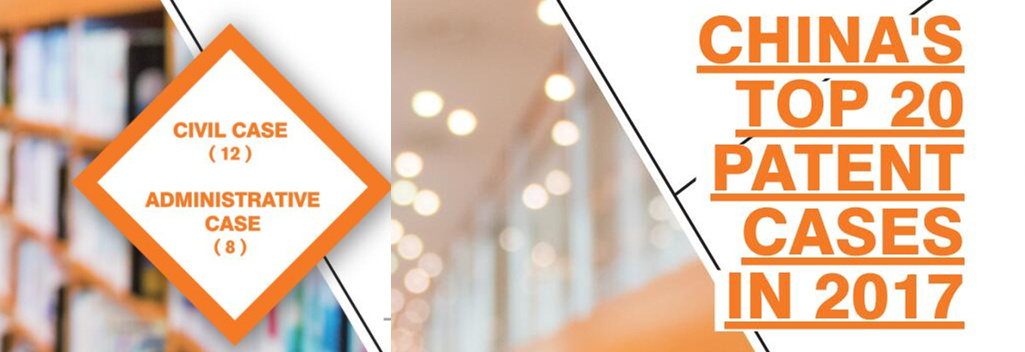

PATENT INVALIDITY CASE OF HEWLETTPACKARD INVENTION PATENT.
◆ First Instance Docket: (2016) Jing73XingChu No. 2757
◆ Second Instance Docket: (2017) JingXingZhong No. 2673
CASE 14 :
City of Beijing
.jpg)
[Headnotes]
Interpretation of a claim term is not unique to patent infringement proceedings, nor conditioned for ambiguous claim or lack of unequivocal meaning. In estimating inventiveness of a patent, it is also necessary to conduct claim interpretation to ascertain the protection scope, and on that basis to determine whether it has been taught by the prior art. Moreover, claim interpretation must be done by the standard of level of knowledge and technical ability of a person having ordinary skill in the art (PHOSITA), taking the claim and the written description if necessary to ascertain the scope of protection under the claim.
[Synopsis]
Appellant (Defendant below): State Intellectual Property Office, Patent Reexamination Board (PRB, or the Board)
Appellant (Third party below): Bao Hongwei
Appellee (Plaintiff below): Hewlett Packard Development Co. (HP)
This case relates to an invention patent for “Ink Jet Print Head Having Ground Bus That Overlaps Transistor Active Regions” (the Patent)
Bao Hongwei petitioned the PRB for invalidation of the Patent on February 26, 2015, on the grounds that claims 1-8 of the Patent lack inventiveness, in violation of Patent Law provision in Article 22(3). Therefore, all claims of the Patent should be invalidated, for which he provided evidence.
Upon examination, the Board found: claim 1 of the Patent, in light of combined references 2-1 and 2-3, lacks prominent substantive character and notable progress, and therefore does not have inventiveness, in violation of Patent Law provision in Article 22(3). It issued Decision No. 27391 for invalidity (the “Decision”), invalidating all the claims.
HP is not satisfied with the Decision and filed suit for review of the administrative proceedings, claiming:
(1) The Decision’s interpretation of the “Active Region” and the finding of fact for reference 2-3 is inaccurate; and (2) claims 1-8, in light of the combination of references 2-1 and 2-3, and common sense, do have inventiveness, in conformity with Patent Law provision in Article 22(3). In sum, HP requests that the court vacate the Decision and remand for a new one. The PRB argues: the Decision made a proper finding of fact, and proper application of law, with proper procedure and conclusion. It therefore requests the court dismiss plaintiff’s complaint, so does the third party.
Beijing Intellectual Property Court found: a PHOSITA, on the premises that he understands the working principles of field effect transistor, combined with relevant information recorded in the patent specification, will recognize that claim 1, in light of the combination of reference 2-1 and 2-3, has prominent substantive character and notable progress, and possesses the inventiveness required under Article 22(3) of the Patent Law. The recited claims 2-8 depending from claim 1 also have inventiveness. Based on this, the court vacated the Board’s decision and remanded the case for a new decision. The Board and Bao Hongwei, both dissatisfied, appealed to Beijing High People’s Court, which dismissed the appeal.
[Judge’s Comment]
The key issue of this case is how to interpret “Active Region” as used in the claim of the patent. Only when this patentee-coined phrase is properly interpreted can further determination be made as to whether prior art teaches on the relevant technology.
Since HP introduces in claim 1 the concept of “Active Region” which has no ordinary definition, and claim 1 is distinguished from reference 2-1 in the ground bus that overlaps transistor active region. Therefore, to determine whether the prior art teaches on the patent, it has to be first understood what “Active Region” means in claim 1 to define its protective scope.
The subject matter of a patent claim is an intangible thing which can only be portrayed in words, and words that is all a patent can use to define its protective scope. When a claim is expressed in limited language, it needs to be interpreted, which is claim interpretation. Thus claim interpretation is indispensable for determining patent protective range. In the patent claim, in particular, the patentee, in order to describe the subject matter concisely and clearly, would coin certain technical terms which do not have ordinary interpretation in the relevant field. In such circumstances, it is more necessary to interpret such terms from the perspective of a PHOSITA so as to correctly understand the claimed subject matter to ascertain the protective scope of the patent.
As to the problem of claim interpretation in patent administrative proceedings, in most cases, the basic rule is maximum interpretation rule in the patent prosecution process, i.e., the most expansive reasonable interpretation on basis of literal language of the claim, in combination with the written description. When the written description does not give specific definition of a claim term, the ordinary meaning should be the interpretation made by a PHOSITA upon reading the claim, written description and the drawings. Reading improper limitations from written description or prosecution history into the claim terms must be avoided to reach a better conclusion of patentability and the effect of the claims, to prompt amendment and improvement of the patent specification, for better quality of the issued patents. It can be seen that claim term interpretation is not limited to patent infringement proceedings, nor is it premised on ambiguity or equivocality of claim terms; it can be necessary, in evaluating patent inventiveness, to conduct claim interpretation to ascertain scope of protection, and on that basis, to determine whether the prior art teaches on the invention. Moreover, such claim interpretation must be made by the PHOSITA standard, in combination with claim language and the written description to define the protective scope.